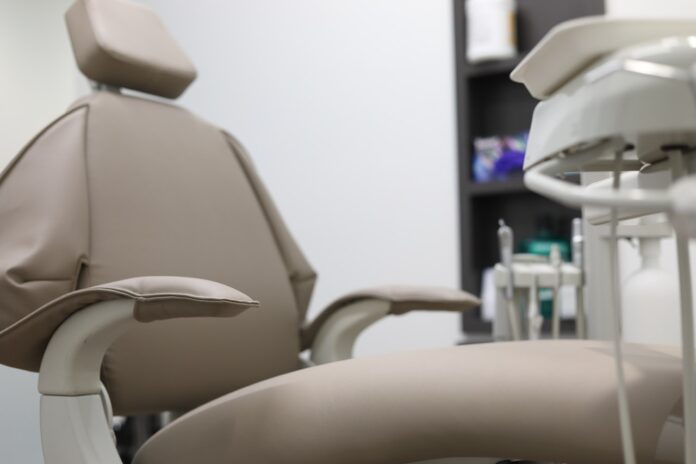For any healthcare practice, exam tables are an essential piece of equipment. These tables provide a stable surface for patients to lie down on during a medical examination, and they allow doctors and nurses to carry out whatever procedures are necessary in a safe and hygienic environment.
While some practices may think that exam tables are an unnecessary expense, investing in high-quality tables can actually improve patient outcomes, speed up average appointment times, and increase the overall efficiency of your practice.
Here are just five reasons why your healthcare practice needs exam tables and how they can benefit both your patients and your staff.
Enhancing Patient Comfort
One of the primary reasons why healthcare practices need exam tables is to ensure patient comfort. A high-quality exam table is designed to provide optimal support and cushioning so that patients can feel at ease during their appointments. These tables often feature adjustable headrests, armrests, and leg rests, which enable healthcare professionals to position patients comfortably for various examinations. This can be particularly important for patients who are elderly, disabled, or have limited mobility, as it can be difficult for them to climb onto a traditional examination bed.
By prioritizing patient comfort, healthcare practices can foster positive experiences and promote a sense of trust and satisfaction during medical appointments. Exam tables aren’t the only way to achieve these aims, but they can be one of the most important investments for a well-equipped doctor’s office.
Facilitating Efficient Examinations
Exam tables are versatile tools that facilitate efficient examinations and procedures. They are equipped with various features that enable healthcare professionals to perform thorough assessments, diagnoses, and treatments.
For example, you need to look for medical exam tables for sale that have built-in storage drawers or cabinets that allow healthcare providers to keep essential equipment and supplies within reach. Additionally, many exam tables have adjustable backrests, which enable patients to be positioned in a reclined or upright position depending on the procedure being conducted. Such flexibility enhances the efficiency of healthcare practitioners and contributes to accurate diagnoses and effective treatments.
Ensuring Accessibility and Safety
Accessibility and safety are crucial aspects of any healthcare environment. Exam tables are designed to accommodate patients of different ages, sizes, and physical abilities. They offer features such as adjustable heights, wide surfaces, and sturdy constructions, making it easier for patients to get on and off the tables safely. Furthermore, exam tables often come equipped with side rails and grab bars that provide extra support for patients with mobility challenges.
By investing in exam tables that prioritize accessibility and safety, healthcare practices can ensure that all patients receive the care they need without compromising their well-being. The key is to find medical tables that come with these accessibility features already built into their frames. For example, you might look for tables that offer ambidextrous platforms and handles for healthcare professionals that are both right- and left-handed.
Supporting Infection Control Measures
Maintaining a clean and hygienic environment is of utmost importance in healthcare practices. Exam tables can play a significant role in supporting infection control measures.
High-quality exam tables, for example, are designed with materials that are easy to clean and sanitize. They’re often covered with antimicrobial or waterproof upholstery to help prevent the buildup of bacteria or other pathogens. Some exam tables also feature disposable, single-use covers that can be easily replaced between patient visits, further reducing the risk of cross-contamination.
By investing in exam tables that prioritize infection control, healthcare practices can safeguard the health and well-being of both patients and staff.
Enhancing Workflow and Space Optimization
Efficient workflow is essential for healthcare practices to maximize productivity. Exam tables can contribute to these goals by offering integrated features that enhance organization, save space, and improve workflow efficiency.
Many exam tables come equipped with integrated power outlets, USB ports, or data ports, allowing healthcare professionals to easily connect and use electronic devices during examinations. What’s more, exam tables can be made with built-in scales or imaging capabilities that will eliminate the need for additional equipment, streamlining the examination process and optimizing space utilization within the healthcare practice.
Conclusion
Exam tables are indispensable assets in any healthcare practice. They prioritize patient comfort, ensure accessibility and safety, facilitate efficient examinations and procedures, support infection control measures, and enhance workflow efficiency. By investing in high-quality exam tables, healthcare practices can provide a positive patient experience, improve operational efficiency, and deliver optimal care. Choosing the right exam table that suits the specific needs of the practice and its patients is a wise investment that can yield long-term results.
Read Also
- How to Drive Growth Through Customer Centricity in HealthcareThe world of healthcare is changing in big ways. Consumers are now stepping up and taking charge of their health journeys. This change is happening now for important reasons. The U.S. health and wellness market is huge, projected to be over $6 trillion in 2025. This growth is fueled by rising out-of-pocket costs and more… Read more: How to Drive Growth Through Customer Centricity in Healthcare
- Maximizing Digital Reach for Podiatry Clinics in Local HealthcareMaximizing Digital Reach for Podiatry Clinics in Local Healthcare As the healthcare industry evolves, mobile marketing becomes indispensable for practitioners. Podiatry clinics, focusing on foot and ankle care, must adapt to digital strategies to engage patients effectively. Implementing tailored SEO practices is crucial for these clinics to thrive in an increasingly competitive market. Digital marketing… Read more: Maximizing Digital Reach for Podiatry Clinics in Local Healthcare
- Leveraging Virtual Medical Assistants to Maximize Operational Efficiency in HealthcareIn the increasingly complex and fast-paced world of healthcare, operational efficiency is critical. Doctors and healthcare administrators are faced with numerous challenges, from managing patient scheduling and medical billing to adhering to stringent regulatory compliance and insurance claims processing. These tasks, while essential, often divert time and resources away from the core mission of providing… Read more: Leveraging Virtual Medical Assistants to Maximize Operational Efficiency in Healthcare
- Optimizing CT Protocols: The Hidden Key to Efficiency and Cost Savings in RadiologyIntroduction: Why CT Protocol Optimization Matters Computed Tomography (CT) is a cornerstone of modern diagnostic imaging, providing critical information across nearly every medical specialty. However, maximizing the value of CT — both clinically and financially — requires more than just advanced hardware. The real secret lies in the optimization of CT protocols. When CT protocols… Read more: Optimizing CT Protocols: The Hidden Key to Efficiency and Cost Savings in Radiology
- Hospital Discharge Accuracy Improves With Daily Advisor InvolvementThe hospital discharge process has a big effect on patient recovery, hospital efficiency, and finances. It requires careful planning and clear communication between team members to make sure patients get the right care when they leave the hospital. Having physician advisors involved at this stage can improve the discharge process by spotting problems that need… Read more: Hospital Discharge Accuracy Improves With Daily Advisor Involvement
- Understanding Clinical Trials: What to Learn and the RoadblocksClinical trials are research studies conducted to determine the efficacy of medical, surgical or behavioral interventions. They are the most commonly used way that researchers assess whether new treatments, drugs or medical devices are safe and effective for use in humans. There are strict protocols governing these studies, and all of this is done in such a… Read more: Understanding Clinical Trials: What to Learn and the Roadblocks







